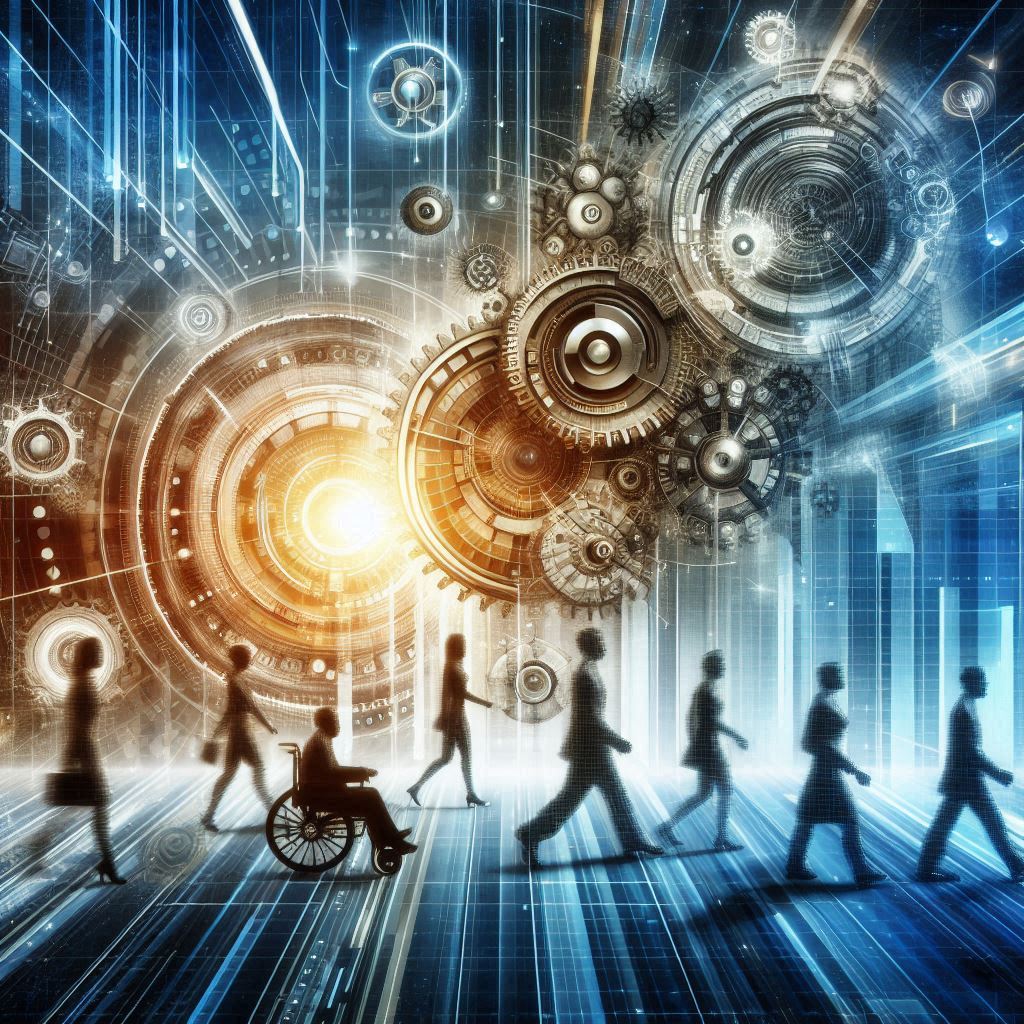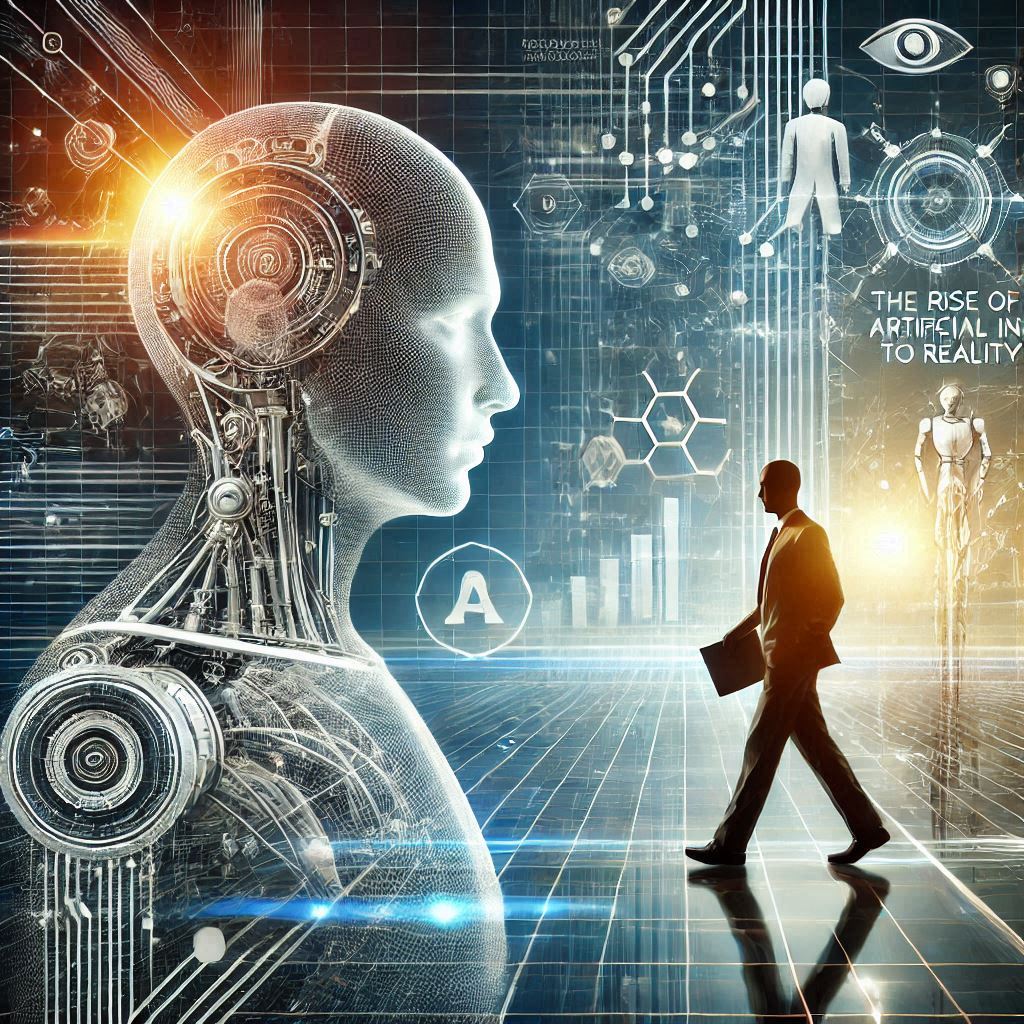The Evolution of Technology: A Historical Perspective
Technology has always been a driving force behind human progress. From the earliest tools used by our ancestors to the cutting-edge innovations of today, technology has shaped every aspect of human life—how we communicate, work, learn, and interact with the world. Understanding the historical evolution of technology not only gives us insight into how far we’ve come but also helps us predict where technology may take us in the future. In this article, we’ll explore the key milestones in the evolution of technology and how they have impacted society.
1. The Dawn of Technology: Early Tools and Innovations
The history of technology dates back to the very beginnings of humanity, when our ancestors first started crafting tools from stone, wood, and bone. These early innovations were driven by necessity—tools for hunting, building shelter, and protecting oneself.
- Stone Tools: The earliest known tools date back more than 2 million years. Early humans, such as Homo habilis, used simple stone tools for cutting and processing food. These tools laid the foundation for more complex technologies in the future.
- The Discovery of Fire: One of the most important technological advancements was the discovery of fire, which enabled early humans to cook food, stay warm, and protect themselves from predators. Fire also played a key role in the development of metallurgy, as it was used to forge metal tools.
- The Wheel: Around 3,500 BCE, the invention of the wheel revolutionized transportation and machinery. It allowed for the development of carts, enabling humans to move goods more efficiently and travel longer distances.
Why it matters: These early technologies set the stage for more advanced developments by demonstrating human ingenuity and the desire to improve everyday life.
2. The Agricultural Revolution: Transforming Society
The Agricultural Revolution, which occurred around 10,000 years ago, marked a major shift in human history. The development of farming technologies allowed humans to settle in one place and form complex societies.
- Domestication of Animals: The domestication of animals like horses, oxen, and sheep enabled more efficient farming and transportation. This shift from hunter-gatherer lifestyles to agricultural societies created surplus food and allowed populations to grow.
- Plows and Irrigation: The development of tools like the plow and irrigation systems enabled civilizations to grow larger crops and feed more people. These advances in agriculture provided the foundation for the rise of cities and empires.
Why it matters: The Agricultural Revolution brought about the shift from nomadic life to settled agricultural communities, which paved the way for the rise of complex civilizations, trade, and innovation.
3. The Industrial Revolution: A Turning Point in History
The Industrial Revolution, which began in the late 18th century, represents one of the most significant technological transformations in human history. It marked a shift from agrarian economies to industrialized, machine-driven economies, and it led to profound changes in every aspect of society.
- Steam Power: The invention of the steam engine by James Watt in 1775 revolutionized transportation and manufacturing. Steam-powered locomotives and ships allowed for faster movement of goods and people, while factories could now produce goods on a mass scale.
- Mechanization of Production: The introduction of machinery in factories led to the mass production of goods, significantly reducing the cost of production and making goods more affordable for the average person. Innovations like the spinning jenny and the power loom transformed textile manufacturing.
- Urbanization and Social Change: The Industrial Revolution led to rapid urbanization as people moved from rural areas to cities in search of work. This shift created new social classes and laid the foundation for modern economies and urban life.
Why it matters: The Industrial Revolution reshaped the global economy, shifting from manual labor to mechanized production. It also set the stage for many of the modern technological innovations we use today.
4. The Digital Revolution: The Age of Information
The late 20th century witnessed the dawn of the Digital Revolution, driven by the rise of computers, the internet, and information technology. These advancements fundamentally changed how we live and work, creating the digital age we now inhabit.
- The Personal Computer: The invention of the personal computer in the 1970s by companies like Apple and IBM brought computing power into the home and workplace. With the development of user-friendly interfaces and software, computers became accessible to the general public.
- The Internet: The creation of the internet in the 1990s revolutionized communication and information sharing. The World Wide Web allowed people to connect with others around the world, access vast amounts of information, and engage in online commerce.
- Mobile Technology: The rise of smartphones, starting with the launch of the iPhone in 2007, further accelerated the digital transformation. Mobile technology allowed people to access the internet, communicate, and perform everyday tasks from the palm of their hands.
Why it matters: The Digital Revolution has connected the world in unprecedented ways, enabling the growth of the global economy, e-commerce, and social networks. It has also sparked the development of new industries, from tech startups to the gig economy.
5. The Rise of Artificial Intelligence and Automation
In the 21st century, artificial intelligence (AI) and automation have become the next frontier in technological innovation. AI is enabling machines to learn, reason, and make decisions, while automation is transforming industries by replacing human labor with robots and algorithms.
- Machine Learning and AI: AI technologies like machine learning, deep learning, and natural language processing are being used to solve complex problems, from healthcare and finance to customer service and logistics. AI systems can analyze vast amounts of data, identify patterns, and make predictions with greater accuracy than humans.
- Automation and Robotics: Robotics and automation are revolutionizing manufacturing, agriculture, and even healthcare. Automated systems can perform repetitive tasks more efficiently and accurately than humans, leading to increased productivity and lower costs.
- Smart Homes and IoT: The Internet of Things (IoT) has led to the development of smart homes, where devices like thermostats, refrigerators, and lights can be controlled remotely via smartphones and AI systems. These innovations are making our daily lives more efficient and interconnected.
Why it matters: AI and automation are transforming industries by enhancing productivity, improving decision-making, and creating new ways of doing business. They also bring new challenges, such as the need for reskilling workers and addressing ethical concerns around AI.
6. The Future of Technology: Emerging Trends
As technology continues to evolve, we can expect even more groundbreaking innovations in the years to come. Some of the emerging trends that will shape the future include:
- Blockchain and Cryptocurrencies: Blockchain technology, which underpins cryptocurrencies like Bitcoin, is being explored for its potential to transform industries such as finance, healthcare, and supply chain management. It offers decentralized, secure transactions that do not require intermediaries.
- Quantum Computing: Quantum computing is poised to revolutionize computing power. By harnessing the principles of quantum mechanics, quantum computers can process information at speeds far beyond current classical computers, potentially solving complex problems in fields like cryptography, medicine, and climate science.
- Augmented and Virtual Reality: AR and VR technologies are creating new ways to interact with digital content. These technologies have applications in gaming, education, healthcare, and entertainment, and they offer immersive experiences that were once thought to be science fiction.
Why it matters: Emerging technologies like blockchain, quantum computing, and AR/VR have the potential to reshape industries and improve the quality of life in ways we can’t yet fully imagine.
7. AdSense Compliance: Monetizing Technology Content
If you’re creating content about the evolution of technology, it’s essential to follow Google AdSense’s content policies to ensure successful monetization. Here are some best practices:
- Create High-Quality, Original Content: Provide in-depth, accurate, and engaging information about the history and future of technology. Original content that educates and informs your audience will attract visitors and help improve your AdSense performance.
- Follow AdSense’s Content Guidelines: Ensure your content complies with AdSense’s policies by avoiding prohibited material such as misleading claims, hate speech, or adult content.
- Ensure a Positive User Experience: Design your website to be user-friendly, mobile-responsive, and free of excessive ads. A good user experience will help you maintain your audience and improve ad revenue.
Conclusion
The evolution of technology has been marked by key breakthroughs that have transformed society in profound ways. From the earliest tools to the digital revolution and the rise of AI, technology has continually reshaped the world, making life more efficient, interconnected, and dynamic. As we look to the future, emerging technologies like blockchain, quantum computing, and AR/VR hold the promise of further revolutionizing industries and solving global challenges. By understanding the historical development of technology, we can better appreciate its potential and prepare for the innovations yet to come.



